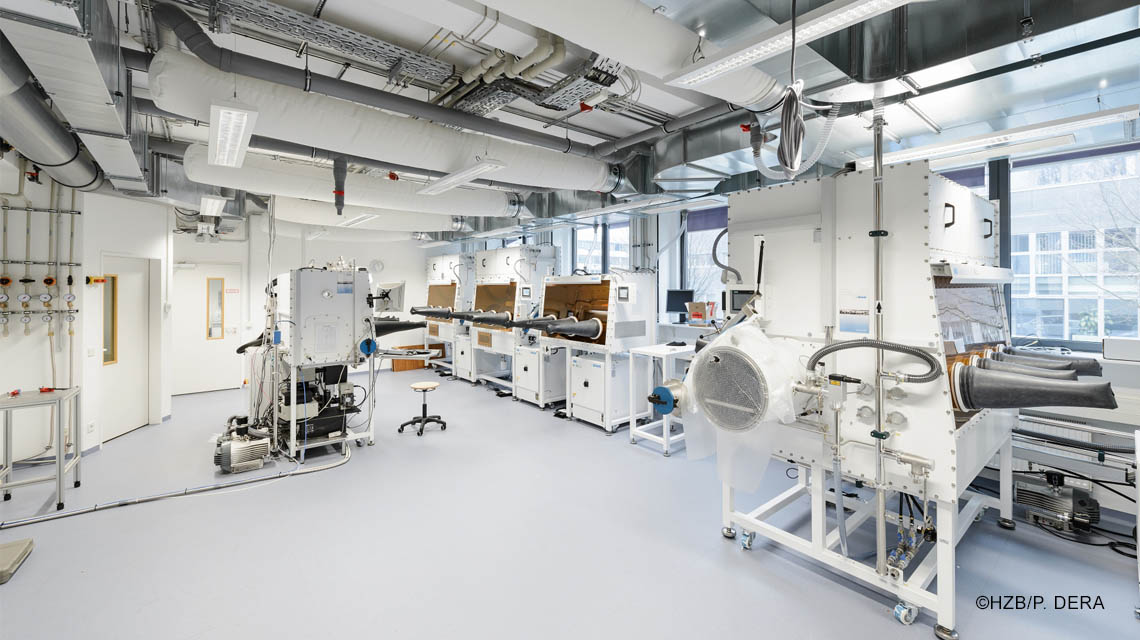
HZB - HySPRINT – Stability Lab
The Helmholtz Innovation Lab HySPRINT provides a unique infrastructure with the purpose to test and age perovskite solar cells (PSC) for the improvement of device stability under realistic ageing conditions at high device numbers allowing high throughput as well as a high level of statistical confidence. The system is designed for long-term measurements and ageing of single junction PSC and monolithic tandem solar cells (e.g. PSK/Silicon and PSK/CIGS) under realistic conditions. Solar cells in power plants are operated at their Maximum Power Point (MPP). It was found that the stability of PSC is strongly dependent on the electric load applied while the ageing test is performed. Thus, only MPP-Tracking will give realistic predictions of cell lifetime. Our High-Throughput Aging-System is equipped with electronics that allow us to MPP-track more than 500 solar cells in parallel. Testing is performed under AM1.5G light with 1-2 suns intensity. The sample environment can be set to nitrogen, other gases or air. The substrate temperature is permanently controlled between 0-85°C. Sequential JV scans can be performed to gain further insights into device behaviour. Voc, Jsc and constant voltage ageing is also possible.
The Tandem Ageing-System is equipped with electronics that allow us to track 4 tandem solar cells in parallel. As the performance of monolithic tandem solar cells is strongly dependent on the utilized spectrum, an array of 193 LEDs with two different peak wavelengths was engineered. The 470 nm and 940 nm centre emission wavelengths are absorbed in the top- and bottom cell, respectively. Both intensities can be tuned independently to adjust the desired photocurrents of the subcells. With this, we can artificially induce a mismatch between the subcells in a controlled way. The cells are measured in ambient conditions with a controlled temperature of 25°C.

This project has received funding from the European Union’s Horizon 2020 research and innovation programme under grant agreement N°101006715
